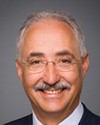Mr. Speaker, I apologize. I had been led to believe that there would be an introductory speaker from the government side. Nonetheless, I am ready.
I believe that Bill C-7, An Act to amend the Aeronautics Act and to make consequential amendments to other Acts, should proceed.
When I first arrived in the House four years ago, I undertook an exercise that took several months and that was to read Marleau and Montpetit. Many of us here have read it and found it to be absolutely riveting in terms of jurisprudence and parliamentary procedure. I know the hon. member opposite found it exhilarating when I asked him what his comments were in the book review.
Let me just paraphrase what Marleau and Montpetit talk about when they talk about hoist amendments, which originated in British practice and appeared in the 18th century. A hoist amendment enabled the House of Commons to postpone resumption of consideration of a bill. An analysis of hoist amendments moved in the House of Commons since Confederation shows that the cases in which this procedure has been used fall into two specific periods: the first was from 1867 to about 1920 and the second from 1920 to the present day.
The first hoist amendment was moved on November 28, 1867. Prior to 1920, it was the government not the opposition that used hoist amendments most often. Because the House only had a little time for government business during the short sessions of that era, the government sometimes felt obliged to dispose of a great number of private members' bills by using the hoist procedure, so it would have more time to devote to its own legislation. Since 1920, the period set aside for government business has grown to take up the largest share of the time in the House. Hoist amendments have gradually come to be used almost exclusively by the opposition.
From an examination of the precedents, it is clear that hoist amendments were moved to motions for second and third reading during periods when there was considerable tension between the parties. Those amendments rarely passed. Of the scores of cases recorded in Journals, only four succeeded. In each of those four cases, the hoist amendment was moved by the government with the intent of defeating a private member's bill.
Thus, in order to stop the work of the other parties, and not just the three parties but by this very Parliament itself, the NDP has put forward this ancient parliamentary tactic, I believe, just to be obstructionist.
Bill C-7 deals with integrated safety management systems, or as we say in the vernacular SMS. It authorizes the designation of industry bodies to certified persons undertaking certain aeronautical activities. Other powers would be enhanced or added to improve the proper administration of the act, in particular, powers granted to certain members of the Canadian Forces to investigate aviation accidents involving both civilians and military aircraft or an aeronautical facility. This enactment is thus a proactive measure to assist in preventing airplane accidents from occurring in the future.
The opposition's approach at the committee table was clear from day one. Public safety was and is our number one concern not partisan politics as we have seen permeate so much of the government's manoeuvring in the 38th and now the 39th Parliament.
Regrettably, and I must introduce this little negative, the bill did not get through the House in June 2007 as it should have. I think most of us, if not all, were expecting that it would, especially when all members of the committee were working together.
Members of the NDP, who were also working diligently on this in the House, ended up fighting every improvement and then voted to accept them all, coming into the House with a change of mind. That is fine. Such is the way of politics. However, each party seemed to contribute to improve the bill. Government members also demonstrated that they were ready to accept the very good position that all parties had worked diligently to bring forward.
Now, we have a bill that says we have taken into consideration all of those issues and have put into place a safety management system that does not replace the ministerial regulatory oversight required to ensure that the weight of the law is behind all regulations, systems and requirements, that ensure that the public is being served, and that this is always put forward with security and safety first and foremost. If nothing else, that level of cooperation merits supporting this bill.
The Standing Committee on Transport, Infrastructure and Communities has already heard from many key witnesses and stakeholders, such as the Air Line Pilots Association, Transport 2000 Canada, the Union of Canadian Transport Employees, the Transportation Safety Board of Canada, the Aerospace Industries Association of Canada, the Air Canada Pilots Association, the Canadian Federal Pilots Association, and the Helicopter Association. It heard from unions such as Teamsters Canada, business organizations such as the Canadian Business Aviation Association, transportation associations such as the Air Transport Association of Canada, and airport representatives such as the CAC, the Canadian Airports Council, and the International Civil Aviation Organization. In addition to other organizations, it heard from CUPE, the Canadian Union of Public Employees, and departmental officials from the Department of National Defence and Transport Canada.
As a party, we listened to witnesses' concerns on the possible reduction of aviation inspectors with the implementation of this system. If Transport Canada were to essentially diminish the role of the inspectorate or eliminate it altogether, Liberals would not support the bill. However, all the witnesses had the same point of view or enjoyed concurrence in one way or another.
The committee dealt with the issues that appeared to focus particularly on safety. Of the concerns that were raised, the committee realized that these were responsible amendments and, thus, responsible amendments were put forward to strengthen the bill.
The committee actually devoted six months to the hearings and that was a very large amplitude and cross-section of stakeholders and witnesses. Some, indeed, were opposed but most were in favour. Many had concerns but that is why we have an amending process.
Most of the amendments made by the three opposition parties were passed and now form part of the legislation before the House. This is an example of a committee doing its work and expecting a forward movement with the bill. Hopefully, a vote will occur and members can actually indicate it in a democratic fashion.
To summarize some of the key amendments, we have provided definitions to explain safety management systems and have updated the International Civil Aviation Organization's standards. There have been several amendments made to the Aeronautics Act over the years but none of these amendments seem to have actually addressed the matter of bringing Transport Canada's standards and regulations up to ICAO standards. The amendment was put forward by the opposition parties.
Another amendment had the minister take responsibility for the development and regulation of aeronautics and the supervision of all matters relating to aeronautics, thus ensuring, hopefully, the highest safety and security standards.
Ensuring that regulatory oversight is not replaced by safety management systems so that safety management systems have to be implemented by each company that operates in the aeronautics industry, whether it be the carriers, the maintenance companies or the suppliers, would have an additional layer of safety available to Canadians who are justifiably concerned when they use airplanes. I note that the hon. member for Charlottetown, in supporting some of these key amendments, was keen to ensure that there is a definition to explain safety management systems.
Those types of hearings, meaning that people are responsive to them, represent what Parliament can do in a minority government that actually listens, acts and agrees on amendments that make the minister responsible for the development of regulations on these matters of supervision. Canadians want to know that we as a nation have taken a leadership role, and that when they get on board an airplane they know it meets our expectations as Canadians to meet the highest possible standards, and rightly so. Do we know of anyone who would want to take a chance on getting on an aircraft? I do not think so.
Further, I note that the hon. member for Charlottetown made mention that the committee devoted six months to hearings. He stated that there was a whole host of stakeholders and witnesses and that some were opposed but most were in favour, that some had concerns, but that is why we had many amendments.
I believe that the hon. member for Charlottetown, in the spirit of compromise and in trying to make the committee system work, really was on the right track. I know he has spoken at length on this matter several times. We hear now in the last days perhaps of this parliamentary session that we should try to pass as much legislation as possible. If we were almost a year late on this bill already, then at the very least we should be moving forward and trying to clear some of this legislation so that people in the public service can actually get to it and start doing their job, which they are eager to do, to tighten this up and to make our skies more secure.
I see that during the previous debates there were more compliments than there were acrimonious accusations. In this House it is always a pleasure to see people getting compliments. I notice that all parties were recognized for their contributions. It is interesting that in coming together on something like this we can recognize that safety is paramount. We cannot say it enough times that safety is first.
Taking into consideration all of these issues, I believe the committee members deserve credit for their six months' worth of work, which is enough in itself, but the introspective scrutiny and lack of partisanship is a compliment of which we can all be proud.
The hon. member for North Vancouver was also active in this matter. Including aspects of the Canadian Forces to assist in the investigation of aviation accidents that involve both civilians and the military is something that can be done in Canada. It would enhance our inspection services and the reliability of a system that has a built-in backup and follow-through for these things.
I was trying to calculate the total number of witnesses and stakeholders. Among them are CUPE, the teamsters, the airline pilots associations, the Canadian airport associations and the Canadian Business Aviation Association. That is just a precis of the organizations that appeared. When we add up all of that input, we are talking well into hundreds of thousands of people converging on one point in everyone's self-interest. Fortunately the public is the main beneficiary of those hundreds of thousands of people represented by those dozens of organizations all aiming for the same thing which is to make sure that those planes that everyone takes land safely.
The concern about the possible reduction of inspectors has been addressed. We have assurances that this will not happen. Judge Moshansky was the commissioner of inquiry into the Air Ontario crash at Dryden. To my continuing sorrow, and I will never forget the day when I heard the news, I lost two of my very best friends in that crash. It was a very emotional day. I can remember it vividly. In having a chance to speak to this now, it is almost impossible to think of this in that context, when one loses one's best friends. At the best of times one wants to make sure that there is some legacy to actually ensure that no one else will have to endure that kind of sorrow.
In summary I will talk about key amendments. First I want to mention the many major organizations that spoke in favour of the bill: the Union of Canadian Transportation Employees, Teamsters Canada, Transport 2000, the Air Line Pilots Association, the Aerospace Industries Association of Canada, the Canadian Airports Council, the Air Transport Association of Canada, the Canadian Business Aviation Association, the Transportation Safety Board of Canada and the Transportation Appeal Tribunal of Canada.
These amendments include additional regulation making powers for things such as aircraft emissions and fatigue counter-measures, as well as safety management systems for holders of Canadian aviation documents. Agreed? I hope so. There are new powers comparable to those of the Canadian Transportation Accident Investigation and Safety Board for the Canadian Forces Airworthiness Investigative Authority to investigate aviation incidents and accidents involving both military and civilian contractors. Agreed? I sure hope so. There are provisions to encourage employees of Canadian aviation document holders to report safety concerns voluntarily without fear of legal or disciplinary action. Supported? I believe that should be so. There are provisions to allow for more self-regulation in low risk areas of the aeronautics industry. Hopefully this would receive unanimous consent. There are additional tools for the Minister of Transport, Infrastructure and Communities to ensure compliance and increased penalties for contravention.
I hope that this bill is passed with its amendments and that everyone supports it when it comes to a vote.








